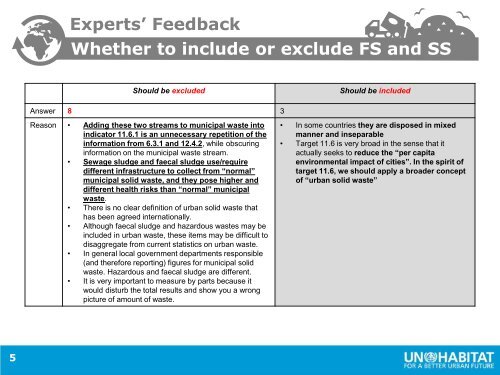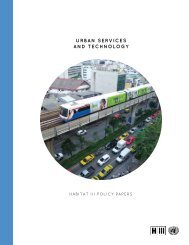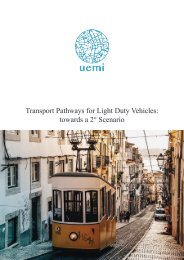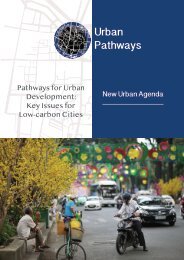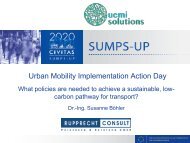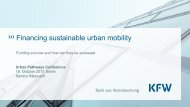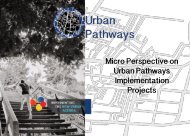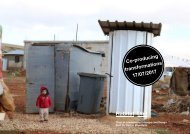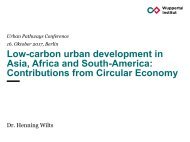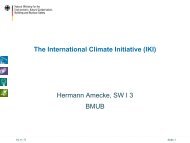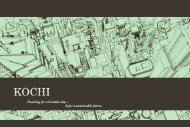Nao_Takeuchi_Waste
Create successful ePaper yourself
Turn your PDF publications into a flip-book with our unique Google optimized e-Paper software.
Experts’ Feedback<br />
Whether to include or exclude FS and SS<br />
Should be excluded<br />
Should be included<br />
Answer 8 3<br />
Reason • Adding these two streams to municipal waste into<br />
indicator 11.6.1 is an unnecessary repetition of the<br />
information from 6.3.1 and 12.4.2, while obscuring<br />
information on the municipal waste stream.<br />
• Sewage sludge and faecal sludge use/require<br />
different infrastructure to collect from “normal”<br />
municipal solid waste, and they pose higher and<br />
different health risks than “normal” municipal<br />
waste.<br />
• There is no clear definition of urban solid waste that<br />
has been agreed internationally.<br />
• Although faecal sludge and hazardous wastes may be<br />
included in urban waste, these items may be difficult to<br />
disaggregate from current statistics on urban waste.<br />
• In general local government departments responsible<br />
(and therefore reporting) figures for municipal solid<br />
waste. Hazardous and faecal sludge are different.<br />
• It is very important to measure by parts because it<br />
would disturb the total results and show you a wrong<br />
picture of amount of waste.<br />
• In some countries they are disposed in mixed<br />
manner and inseparable<br />
• Target 11.6 is very broad in the sense that it<br />
actually seeks to reduce the “per capita<br />
environmental impact of cities”. In the spirit of<br />
target 11.6, we should apply a broader concept<br />
of “urban solid waste”<br />
5


